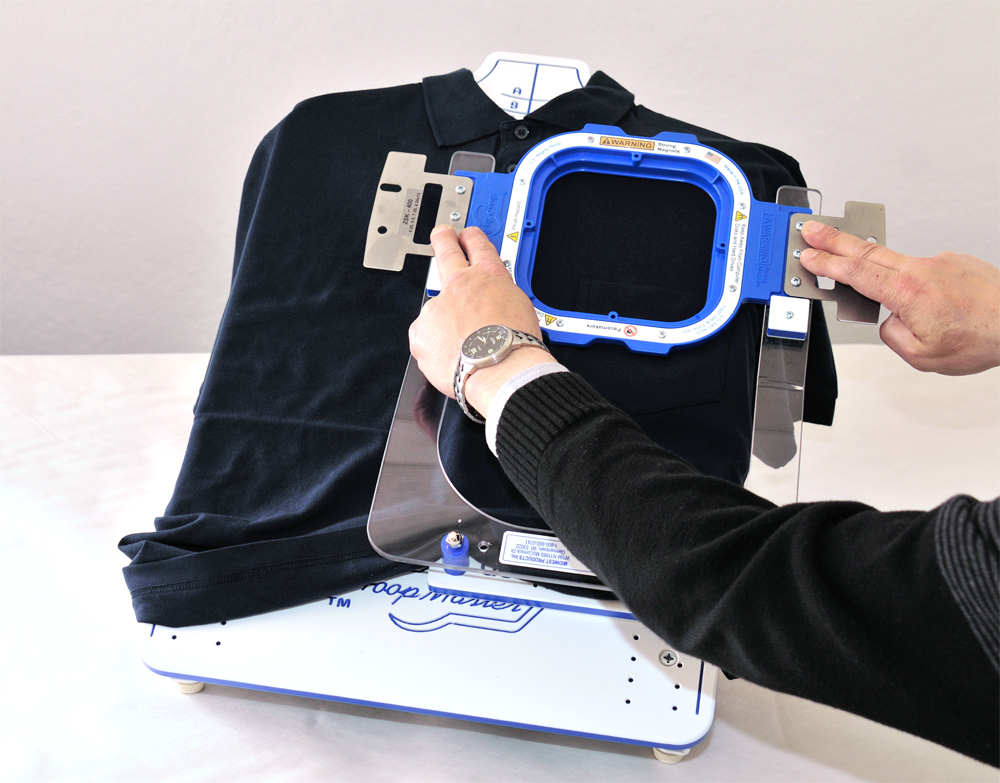The term “hoop size” used throughout the machine embroidery community is confusing. For example, you might measure your actual physical hoop to find it is 6.25 x 4.50” and you have been told that your machine can only sew a design that fits the 4 x 4” hoop, but in reality the actual sewing field of your particular machine model will not stitch a design that exceeds 3.937 x 3.937” – and not a fraction more! We can blame this conflict of measurements on decades of upgrades and changes to meet global demands for machines that require very fine measurements that can’t be calculated in inches, along with the struggle for some of us to grasp the metric system. But no matter where the confusion originated, the issue can be frustrating when trying to find the right size while shopping for designs, so let’s see if we can shed a little light on this issue.
With the exception of commercial machines like a Tajima that will stitch as far as its pantograph will reach, most every machine has a “sewing field” limitation. The sewing field is programmed into the machine software to not allow stitching designs larger than what has been preset for the main purpose of protecting the machine from damage. When a needle comes down on the hoop, the needle will likely break, and this can also crack the hoop, as well as cause other mechanical problems like throwing off the “timing” of the needle and hook assembly or other situation that requires a technician’s repair.
Be aware that unless your machine’s sewing field allows, you cannot purchase a larger hoop and expect it to work for larger designs.As well, some machines offer optional larger hoops, like the Plus Hoop for a small model Husqvarna-Viking, but in this case, to use the hoop for a large design, it requires splitting the design into sections no larger than the preset sewing field.Splitting the file is accomplished by using the appropriate software that in most cases won’t be included with the purchase of a larger hoop.
Hoop Size
Each design product page on EmbroideryDesigns.com includes the actual size of the design in both millimeters and inches. The product page also includes “Hoop Size” in inches, which is supposed to be the equivalent to the sewing field in millimeters, but humans like to approximate things. For example 100mm equals 3.937”, which is so very close to 4” that we who hate decimals round up the figure. Also the sewing field of 130 x 180mm equals 5.12 x 7.09” but we round down the figure to 5 x 7”. So, “Hoop Size” has evolved over the years to being just a term without mathematical accuracy, used to indicate the approximate sewing field limit in inches that your machine must allow in order to accommodate the actual size of the design.
Sewing Field
The measurement of your machine’s sewing field limit is usually listed in the manual, sometimes buried where you least expect to find it. Some software programs, such as Embrilliance Essentials, offer the ability to check and set the sewing limit by machine and hoop size.Many of us have discovered our machine’s sewing field limit while trying to stitch a design that exceeds the preset boundaries.My Husqvarna-Viking Rose, an older model that runs from a program card with one small hoop and no image monitor, will try to stitch the design until it reaches the point where the design exceeds its sewing field limit of 3.93 x 3.93” – a frustrating waste of materials and time.On the other hand, some machines will simply refuse to stitch a design that is too large, and often won’t clearly reveal the reason, such as my Baby Lock Ellageo that doesn’t even recognize that the design is on the USB drive when the design size is more than its sewing field limit of 10.2 x 6.2”. Learn your machine’s sewing field limit, and you will be able to determine whether a design will fit within the recommended “Hoop Size”.
Determining Hoop Size
First understand that the inch has been defined and internationally accepted as being equivalent to 25.4mm (millimeters) or 2.54cm (centimeters).If your ruler displays centimeters, just move the decimal one digit to the right to calculate millimeters. Following is a chart of approximate, but close conversions of sewing field limits. When shopping, be sure to double check the actual size of the design along with the recommended Hoop Size.

|

|

|

|




From some point on, I am preparing to build my site while browsing various sites. It is now somewhat completed. If you are interested, please come to play with baccarat online !!
I read your article carefully, it helped me a lot, I hope to see more related articles in the future. thanks for sharing.
It’s too bad to check your article late. I wonder what it would be if we met a little faster. I want to exchange a little more, but please visit my site casino online and leave a message!!
Reading your article helped me a lot and I agree with you. But I still have some doubts, can you clarify for me? I’ll keep an eye out for your answers.
Reading your article helped me a lot and I agree with you. But I still have some doubts, can you clarify for me? I’ll keep an eye out for your answers.
1xBet является одной из самых популярных на рынке. 1xbet прямо сейчас Огромный выбор событий из мира спорта и киберспорта, множество открытых линий, высочайшие коэффициенты. Кроме того, БК имеет обширный функционал и немногие дает возможность совершать ставки по уникальным промокодам. Используя промокоды, вы можете получить реальный денежный выигрыш, не внося абсолютно никаких средств. Фантастика? – Нет, Реальность Узнать последний промокод вы можете прямо сейчас, однако использовать его необходимо в соответствии с правилами и инструкциями, которые приведены ниже.
Reading your article helped me a lot and I agree with you. But I still have some doubts, can you clarify for me? I’ll keep an eye out for your answers.
celebrex pill
buy paxil online no prescription
Very nice post. I just stumbled upon your blog and wanted to say that I’ve really enjoyed browsing your blog posts. In any case I’ll be subscribing to your feed and I hope you write again soon!
Do you mind if I quote a couple of your articles as long asI provide credit and sources back to your website?My blog site is in the very same niche as yours and my users would certainly benefit from some of the information you present here.Please let me know if this okay with you. Thanks!
As I am looking at your writing, casinosite I regret being unable to do outdoor activities due to Corona 19, and I miss my old daily life. If you also miss the daily life of those days, would you please visit my site once? My site is a site where I post about photos and daily life when I was free.
Cool. I spent a long time looking for relevant content and found that your article gave me new ideas, which is very helpful for my research. I think my thesis can be completed more smoothly. Thank you.
Reading your article has greatly helped me, and I agree with you. But I still have some questions. Can you help me? I will pay attention to your answer. thank you.
I don’t think the title of your article matches the content lol. Just kidding, mainly because I had some doubts after reading the article.
Your article helped me a lot, is there any more related content? Thanks!
Thank you for your sharing. I am worried that I lack creative ideas. It is your article that makes me full of hope. Thank you. But, I have a question, can you help me?
Your point of view caught my eye and was very interesting. Thanks. I have a question for you.
аренда яхт в хорватии | european yachts
I don’t think the title of your article matches the content lol. Just kidding, mainly because I had some doubts after reading the article. https://www.binance.com/uk-UA/register?ref=RQUR4BEO
Your point of view caught my eye and was very interesting. Thanks. I have a question for you. https://accounts.binance.com/en/register?ref=53551167
I don’t think the title of your article matches the content lol. Just kidding, mainly because I had some doubts after reading the article. https://accounts.binance.com/zh-CN/register-person?ref=T7KCZASX